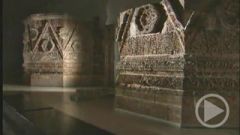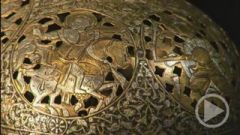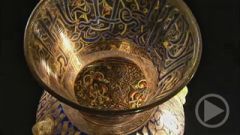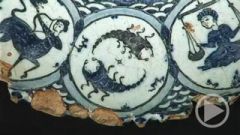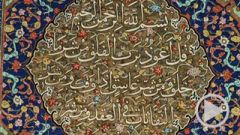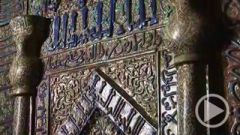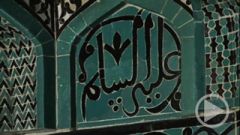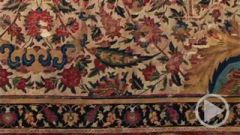- Home
- »
- Germany
- »
- Berlin
- »
- Museum Island
- »
- Pergamon Museum
- »
- The Museum of Islamic Art
- »
- The Pergamon Museum - Aleppo Room
Aleppo Room
The Aleppo Room
Oh apartment, into which rooms the morning comes with laughter, showing its white teeth in a smile! How many days have I been happy in your rooms; have I withdrawn with company for conversations on science and art. While my right hand was safe from the strokes of fate. And in my left was juice of the grape, cooled by the north wind.
That is a euphoric inscription here in the reception hall of the house in Aleppo belonging to Isa ben Butrus. Isa was a "simsar"; what we would call a "broker". He brokered goods from caravans coming from all over the world to buyers from the entire Mediterranean region. In 1600, he ordered the room in which he received guests and business partners re-panelled with painted wood panelling. Three years later, the work was finished. That makes this the oldest panelling of its kind still in existence.
The centre of the room was once crowned by a cupola with a fountain bubbling underneath it. The enormous variety of ornamental freehand painting gives the room a bewitching atmosphere. But what really makes the Aleppo room unique are the painted scenes. They show mythological creatures, literary motifs and Islamic scholars. Yet Isa ben Butrus was a Christian and also had many biblical scenes painted. There are five pictures alone of Mary with the baby Jesus. And here you see the Last Supper.
Although Christian themes dominate, the painter is not oriented towards the Christian-Byzantine style; rather his style is far more reminiscent of Ottoman book illuminations. Halab Shah ben Isa was probably from Persia. It is not only his painting style that leads us to believe that, but also the spelling mistakes in the Arabic inscriptions.
Isa ben Butrus chose the religious scenes very carefully. Although they portray Christian themes, they are also part of the canon of images of Judaism and Islam. The inscriptions, too – psalms, proverbs and poems – are meant to offend no-one. Thus the Aleppo Room is not just a magnificent work of art; it remains right up to the present day a model for different religions coexisting in mutual respect.


